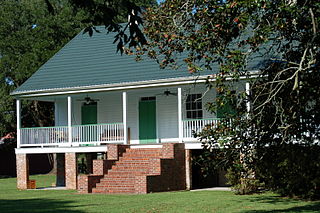
West Baton Rouge Parish is one of the sixty-four parishes in the U.S. state of Louisiana. Established in 1807, its parish seat is Port Allen. With a 2020 census population of 27,199 residents, West Baton Rouge Parish is part of the Baton Rouge metropolitan statistical area.
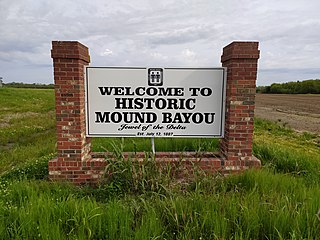
Mound Bayou is a city in Bolivar County, Mississippi, United States. The population was 1,533 at the 2010 census, down from 2,102 in 2000. It was founded as an independent black community in 1887 by former slaves led by Isaiah Montgomery.
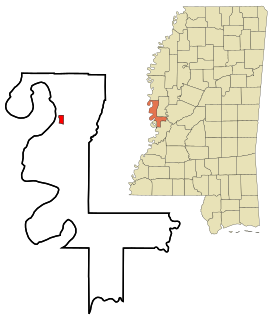
Mayersville is a town on the east bank of the Mississippi River, and the county seat for Issaquena County, Mississippi, United States. It is located in the Mississippi Delta region, known for cotton cultivation in the antebellum era. Once the trading center for the county, the town was superseded when railroads were built into the area. The population of the majority-black town was 547 at the 2010 census, down from 795 at the 2000 census.

The American Bottom is the flood plain of the Mississippi River in the Metro-East region of Southern Illinois, extending from Alton, Illinois, south to the Kaskaskia River. It is also sometimes called "American Bottoms". The area is about 175 square miles (450 km2), mostly protected from flooding in the 21st century by a levee and drainage canal system. Immediately across the river from St. Louis, Missouri, are industrial and urban areas, but many swamps and the major Horseshoe Lake are reminders of the Bottoms' riparian nature. This plain served as the center for the pre-Columbian Cahokia Mounds civilization, and later the French settlement of Illinois Country. Deforestation of the river banks in the 19th century to fuel steamboats had dramatic environmental effects in this region. The Mississippi River between St. Louis and the confluence with the Ohio River became wider and more shallow, as unstable banks collapsed into the water. This resulted in more severe flooding and lateral changes of the major channel, causing the destruction of several French colonial towns, such as Kaskaskia, which relocated; Cahokia, and St. Philippe, Illinois.
The Village of Holly Bluff is a small unincorporated community in Yazoo County, Mississippi, in the Mississippi Delta.
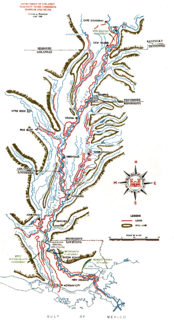
The Mississippi River and its tributaries have flooded on numerous occasions. This is a list of major floods.
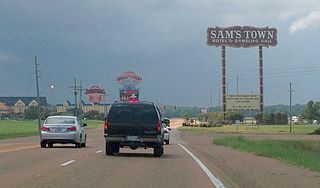
Commerce is a ghost town in Tunica County, Mississippi, United States. Commerce Landing was the town's port.

Bolivar is a census-designated place and unincorporated community in Bolivar County, Mississippi, United States.
Concordia is a ghost town in Bolivar County, Mississippi, United States, located on the eastern edge of the Mississippi Levee, approximately 2.5 mi (4.0 km) west of Mississippi Highway 1.
Princeton is a ghost town located in Washington County, Mississippi, United States.
Eutaw is a ghost town in Bolivar County, Mississippi, United States. The settlement had a port on the Mississippi River called "Eutaw Landing."
Brunswick is a ghost town in Warren County, Mississippi. Brunswick Landing, north of the community, was located directly on the Mississippi River.
Australia is a former town located in Bolivar County, Mississippi, United States. Australia was located on the Mississippi River.
Seyppel is an unincorporated community in Crittenden County, Arkansas, United States.
Leota is a ghost town located in Washington County, Mississippi, United States. The settlement, along with its river port Leota Landing, were at one time located directly on the Mississippi River.
Refuge is an unincorporated community located in Washington County, Mississippi, United States.
Roseacres is an unincorporated community in Coahoma County, Mississippi, United States.
Huntington is a ghost town in Bolivar County, Mississippi, United States.
Riverton is a ghost town in Bolivar County, Mississippi, United States.
Walter Sillers Sr. was an American lawyer, politician, businessman, and planter in Mississippi. He played a significant role in the economic, agricultural, and political culture of the Mississippi Delta region. A cotton planter, he was an advocate for the establishment of crop control policies for the Southern United States through the development of planter's cooperatives. He was a key figure in the Mississippi Democratic Party and was responsible for the construction of levees in the Mississippi River Valley.











